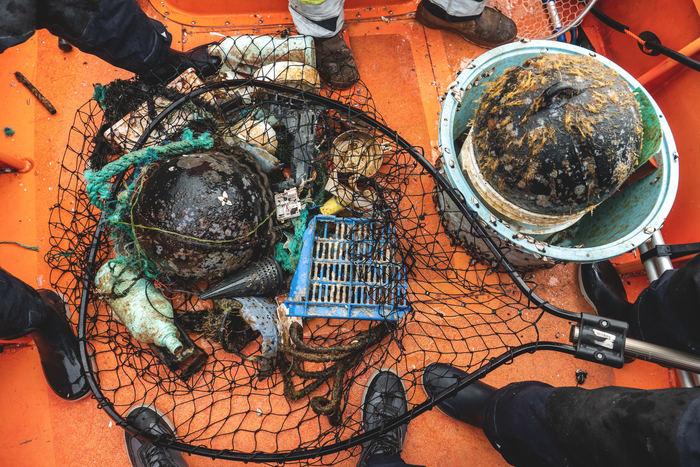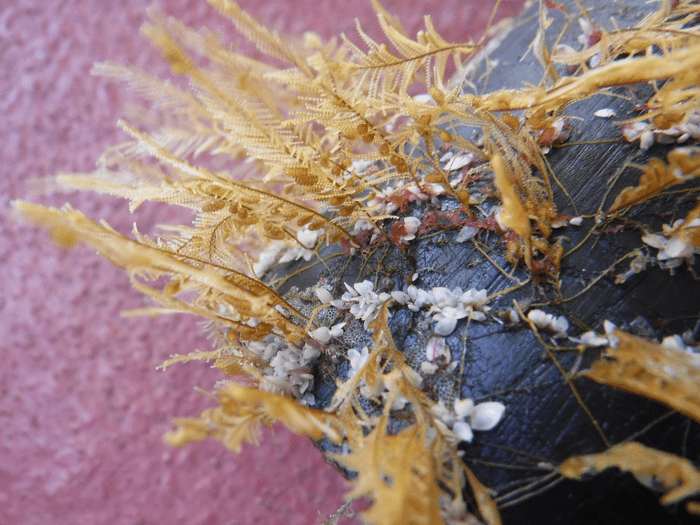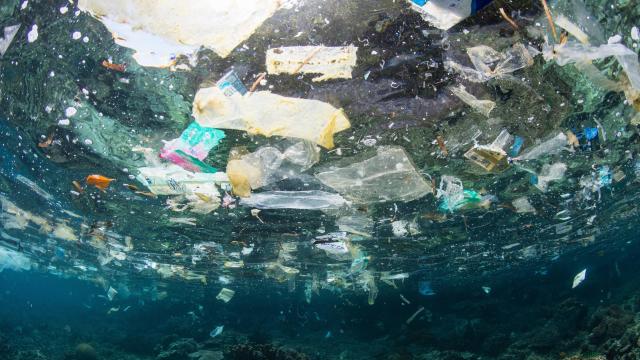Unexpected marine animals are thriving on the massive amounts of plastic waste that has accumulated at sea. In a new study published in the journal Nature Ecology & Evolution, researchers describe how creatures that are normally found along coastlines, not the open ocean, have made their homes on floating trash in the Pacific Ocean.
The team gathered 105 pieces of floating plastic debris in the North Pacific Subtropical Gyre — home of the Great Pacific Garbage Patch — in 2018 and 2019. They found coastal marine animals including invertebrates, anemones, and crabs hanging out and even reproducing on the clusters of plastic pollution. There were coastal species on 70% of the debris they analysed. They identified 484 invertebrate organisms on the items, 80% of which are usually found along coastal habitats and not in the open ocean, according to the study.

The North Pacific Subtropical Gyre, a system of rotating ocean currents, has been “identified as the most heavily plastic-polluted ocean gyre on the globe,” according to the study. It holds an estimated 79,000 tons of trash. The Great Pacific Garbage Patch, where the garbage is concentrated, sits between California and Hawaii. Bottles, plastic bags, small household items, and other discarded objects are trapped there by ocean currents.
The study notes that these thriving “communities” on the floating trash are possible because plastic takes forever to decompose. Before the world’s oceans became one huge receptacle for single-use plastics, species reached new territories by floating on buoyant vegetation or pumice rocks that form after a volcanic eruption. However, those materials break down in water pretty quickly. But today, marine animals can “persist now in the open ocean” because they are “sustained by the vast and expanding sea of plastic debris,” the study authors wrote.

On some of the garbage studied, ocean and coastal species seemed to be interacting. Researchers are concerned about what these findings could mean for sensitive ecosystems in places like Hawaii. Litter on Hawaiian beaches and reefs often comes from the Pacific garbage patch. “The presence of coastal species persisting in the North Pacific Subtropical Gyre near Hawaii is a game changer that indicates that the islands are at an increased risk of colonisation by invasive species,” Nikolai Maximenko, co-author and senior researcher, said in a press release.
The distance between the U.S. coast and the Hawaiian island has been bridged by a trail of floating trash, and scientists still don’t understand the repercussions. “Our study underscores the large knowledge gap and still limited understanding of rapidly changing open ocean ecosystems,” Gregory Ruiz, a study co-author, said in the release. “This highlights the need for dramatic enhancement of the high-seas observing systems, including biological, physical and marine debris measurements.”
